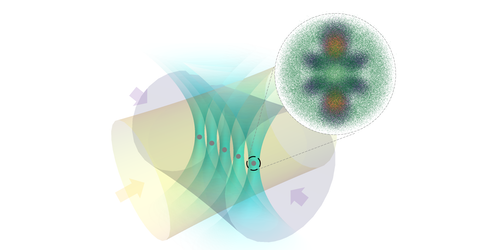• Physics 17, s151
Erbium and similar elements provide a wide range of electronic “handles” for manipulating atoms in many-body quantum experiments.
D. S. Grün/University of Innsbruck
On the bucket list for some atomic physicists is an experiment in which the interactions and positions of a large number of atoms can be precisely controlled. Now Francesca Ferlaino of the University of Innsbruck, Austria, and her colleagues have developed one of the tools that could be well suited to such an experiment: an array of optical tweezer traps holding erbium atoms [1]. These atoms have previously been held in trap arrays called optical lattices but not in optical tweezers, which allow researchers to move the traps during the experiment. Erbium atoms have ideal properties for the kind of highly excited states needed for this experiment, according to Ferlaino and her colleagues.
Most optical tweezer experiments have used atoms with one or two valence electrons, such as rubidium, but last year researchers demonstrated a tweezer array with dysprosium atoms (see Synopsis: It’s a Trap—for Lanthanides). Like erbium, these atoms have more than ten valence electrons that could be put to multiple uses. For example, one transition can be used for atomic imaging or information storage, while another can be used to control interactions through the creation of highly excited (Rydberg) states.
In their experiment, Ferlaino and her colleagues filled an array of five tweezer traps with erbium atoms and used a laser beam to target a particular electronic transition that offered imaging with unprecedented submillisecond time resolution. This capability allowed them to continuously monitor the number of trapped atoms while another laser beam cleared out atoms until just one or two remained in each tweezer. Innsbruck team member Daniel Schneider Grün says that this fast imaging capability could be used in the future to quickly probe tweezer-held Rydberg atoms without disturbing them.
–David Ehrenstein
David Ehrenstein is a Senior Editor for Physics Magazine.
References
- D. S. Grün et al., “Optical tweezer arrays of erbium atoms,” Phys. Rev. Lett. 133, 223402 (2024).




